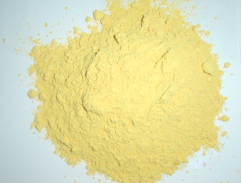What material is electrophoretic paint made of?
In the field of industrial painting, electrophoretic paint is highly regarded due to its unique application method and outstanding performance. But what exactly is the material composition of electrophoretic paint? This question delves into a rich realm of chemical and physical knowledge, deserving our in-depth exploration.
As the name suggests, electrophoretic paint is a type of coating that utilizes the principle of electrophoresis for application. Its basic composition includes resin, pigment, solvent, and additives. The resin is the main component of electrophoretic paint, determining the fundamental properties of the coating. Commonly used resins include epoxy resin, acrylic resin, and polyurethane resin, which offer excellent corrosion resistance, adhesion, and mechanical strength, providing lasting protection for the workpiece. Pigments provide color and hiding power to the electrophoretic paint, while also enhancing the coating’s weatherability and wear resistance. Common pigments include inorganic pigments like titanium dioxide, carbon black, and iron oxide, as well as certain organic pigments.

The solvent in electrophoretic paint serves to regulate viscosity, enabling the coating to be evenly deposited on the surface of the workpiece during the electrophoresis process. Common solvents include water, alcohols, ketones, and so on. With the increasing environmental protection requirements, water-based electrophoretic paint has gradually become the mainstream, reducing the use of organic solvents and being more environmentally friendly. Additives include dispersants, emulsifiers, defoamers, etc., which can improve the application performance of electrophoretic paint and enhance the quality of the film.
The material characteristics of electrophoretic paint are mainly reflected in its excellent corrosion resistance, good adhesion, uniform film thickness, and environmental friendliness. Due to its outstanding performance, electrophoretic paint is widely used in various fields such as automotive, home appliances, hardware, and building materials. In the automotive industry, electrophoretic paint is used for the painting of car bodies and parts, improving their corrosion resistance and aesthetics; in the home appliance industry, it is used for the painting of refrigerator and washing machine shells, enhancing their wear resistance and decoration; in the hardware and building materials industry, it is used for the painting of various metal products, extending their service life.
With the continuous advancement of technology and the increasing environmental protection requirements, the material composition of electrophoretic paint will continue to be optimized and innovated. In the future, we may see the application of more new types of resins, pigments, and additives, as well as more environmentally friendly and efficient electrophoretic paint products. In summary, as a high-performance coating, electrophoretic paint’s carefully selected and scientifically formulated materials endow it with exceptional performance, providing strong support for modern industrial painting.





 WeChat
WeChat